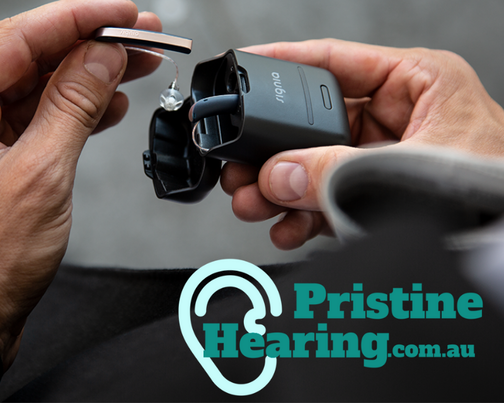
The Evolution Of Rechargeable Hearing Aids
Battery technology in hearing aids have undergone interesting changes and development over the years. In fact, this can be generalised to all devices and technologies. If we just take a look at our mobile phones, this fact is blatantly obvious.
The size of the batteries have needed to keep pace with the miniaturisation of mobile phones while at the same time, improve on capacity and discharge time. We all know that mobile phones or smartphones rather, do more than they have ever done before and yet battery life continues to amaze.
One aspect to smartphones that has necessitated the improvement to battery life is the concept of wireless connectivity and more specifically Bluetooth technology. This wireless protocol has typically been renowned for sucking the life out of phone batteries. However, with smart changes to this universal communication protocol coupled with improvements to battery technology, staying connected to other devices wirelessly with your phone can be done for longer without requiring your phone battery to be recharged.
Of course, we would all still like for the battery life of our phones to last longer but this has definitely come a long way over the years — even last 5 years.
When the first electronic/analogue hearing aids first came out from 1920-1950, they were big bulky devices that were body worn with the ear piece attached to a wire. The necessity for body worn aids was due to the large battery requirements and was also seen in the first cochlear implants.
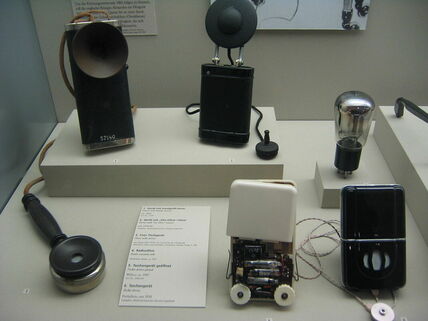
The next step was to make the battery and hearing aid small enough so that the hearing aid could be worn on the ear. This was important for not only cosmetics by audiological reasons. Having the hearing aid on the ears instead of on the body ensures that the microphones pick up the sound where our ears would naturally do so. This helps with localisation cues as well as assists with hearing in noise.
This step towards miniaturisation occurred when the transistor was invented at Bell’s Telephone Laboratories in 1948 with a hearing aid version developed in 1952. Essentially a transistor controls the flow and magnitude of electric current.Transistor technology was a blast and 200,000 of these hearing aids were sold in 1953 alone.
When transistors were able to be made with silicon towards the late 20th century, miniaturisation of hearing aids continued further and digital hearing aids became prolific.
Besides enabling intelligent processing of sounds and improving sound audibility and comfort in general, digital technology has enabled the reduction of battery consumption and as such, the hearing aid battery size could be reduced.
Nowadays the batteries size of hearing aids is contingent on the power output requirements of the hearing aid. This is in turn dependent on the degree of hearing loss of a patient. In general, the greater the hearing loss, the larger the battery you will need and hence size of hearing aid to accommodate the power requirements of the sound that needs to be delivered.
Disposable zinc air hearing aid batteries that are used today (from largest to smallest) include 675, 13, 312 and p10. These have served patients well over the decades but if you are a hearing aid wearer, you may have experienced some frustration with them.
They tend to have great variability in terms of how long each one lasts for. Size 13 batteries typically will last 10-14 days although some of our patients will get only 3-4 days out of them. Sometimes this is because there is current leakage within the hearing aid and suggests they would benefit from a hearing aid service or repair. Often, however, the battery itself is to blame.
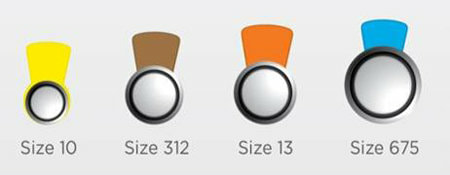
Zinc air batteries like most disposable batteries work by creating energy from a chemical reaction that occurs when oxygen enters small vents. To improve the life of these batteries, we tend to recommends our patients not insert the new battery straight away but to leave them exposed to the air (or oxygen) for 5 minutes first. This allows the chemical reactions within the battery to become fully realised.
Disposable batteries also pose a problem for hearing aid user ill-equipped to handle small objects. This could be due to dexterity problems arising from arthritis or other inhibiting factor. As such, maintaining one’s own sense of independence can be very difficult if hearing aids are required but you cannot change the batteries yourself. This scenario and others necessitated the advent of hearing aids that could use rechargeable batteries.
Hearing aid manufacturers brought out hearing aids that could have rechargeable batteries in size 13 or 312 to make it easier AND more convenient for hearing aid users. These hearing aids came out around 6-8 years ago and were very successful at addressing these issues.
Unfortunately with the improvements to other technologies since and the changes to how we use our smartphones has meant that the original rechargeable hearing aid battery solution wouldn’t cut the mustard in the year 2019. The need to be able stream music, phone calls and other audio while being connected to your phone or other devices wirelessly using Bluetooth meant that rechargeable batteries in hearing aids would lose their charge too quickly (e.g. within 6 hours). Having to recharge your hearing aid (batteries) every 6 hours is and was not ideal.
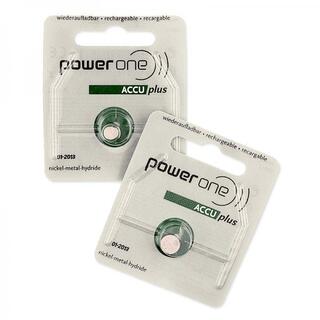
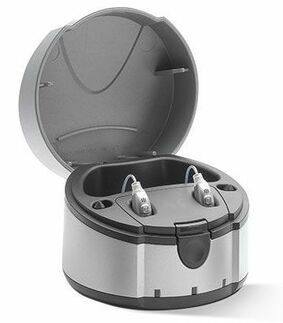
The goal for rechargeable batteries for use within hearing aids is to provide full day use/charge while using the hearing aids for activities such as streaming with Bluetooth. This has only been made possible within the last 18 months (mid 2017) with the release of fully integrated lithion-ion battery technology. This is exactly the same technology used with our smartphones and is not wonder it has been adopted within the hearing aid fraternity.
All hearing aid manufacturers have brought out rechargeable hearing aid solutions using fully integrated lithium-ion technology. This means that there is no longer any battery compartment on the hearing aid itself. This can improve the the longevity of the hearing aid as there are less entry points for dust and moisture to damage delicate electronic components.
Most manufacturers claim their rechargeable hearing aid solutions are the best but lets look more closely. Signia (Siemen’s) Charge&Go options claim that their hearing aids have a daily run time of 19 hours without streaming and 17 hours with streaming after a full charge. They also say these hearing take 3-4 hours to fully charge which is quite quick. There predecessors would take around 6 hours to fully charge. Charge&Go options come in the traditional behind-the-ear and receiver-in-the ear style of hearing aid.
Signia also brought out a new stylish receiver-in-the-canal hearing aid (or mini RIC) that is rechargeable but where the recharger does not need to be plugged into the mains power supply (see top image to this post). You can use the recharger for up to 3 days without needing to plug it in to be recharged itself. This is great for people who go camping or who don’t necessarily have access to a power point say on a trip.
see also: Different hearing aid styles.
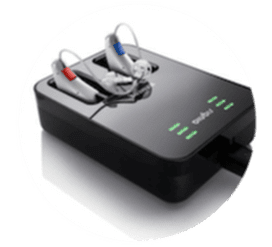
Phonak similarly has rechargeable options. Their Audeo M R receiver in the canal hearing aids are their pride and joy. It was just released late 2018 and is the only hearing aid on the market, at this stage, that is compatible with Android and iphone smartphones.
They claim that it can take up to 3 hours to fully charge their hearing aids which seems comparable to Signia. They also say that the hearing aids are 50% charged in just one hour which is very convenient. They have similar discharging times to the Signia aids too.
Their chargers come in 2 sizes with one being quite small that can even be plugged into your computer/laptop for charging. They also have lithium-ion rechargeable options in their super-power hearing aid range which is great news for people with a severe-profound hearing loss who also want the convenience of rechargeable batteries.
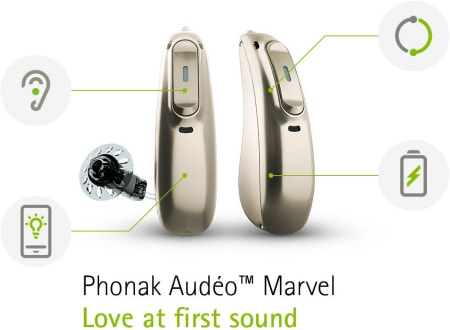
Other manufacturers have similar solutions. No doubt hearing aid technology and battery options will continue to astound. We are living in exciting times and hearing aids of the future will do much more than just improve audibility of sound.
If you are excited and would like to trial the latest hearing aids technologies available, we welcome you. Please call 08 6336 7170 to arrange a suitable time with one of our Audiologists.

